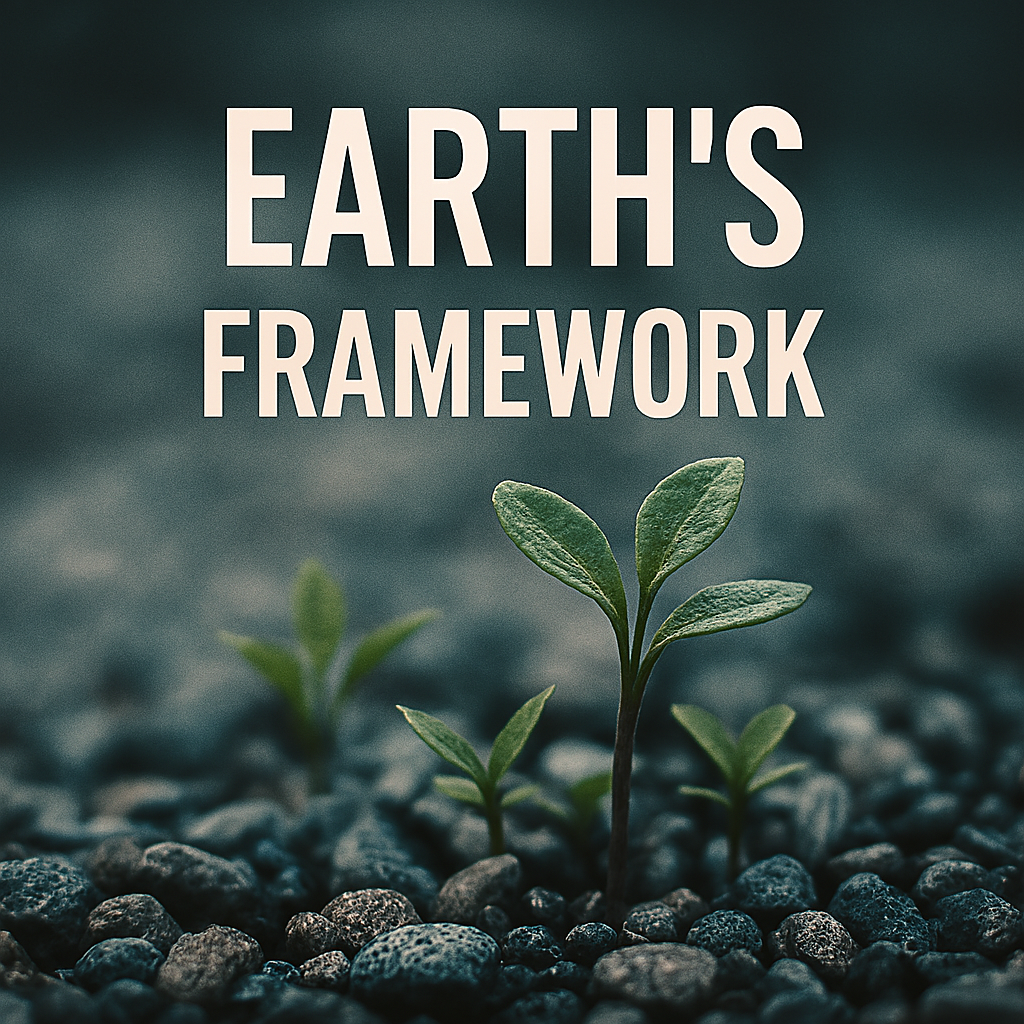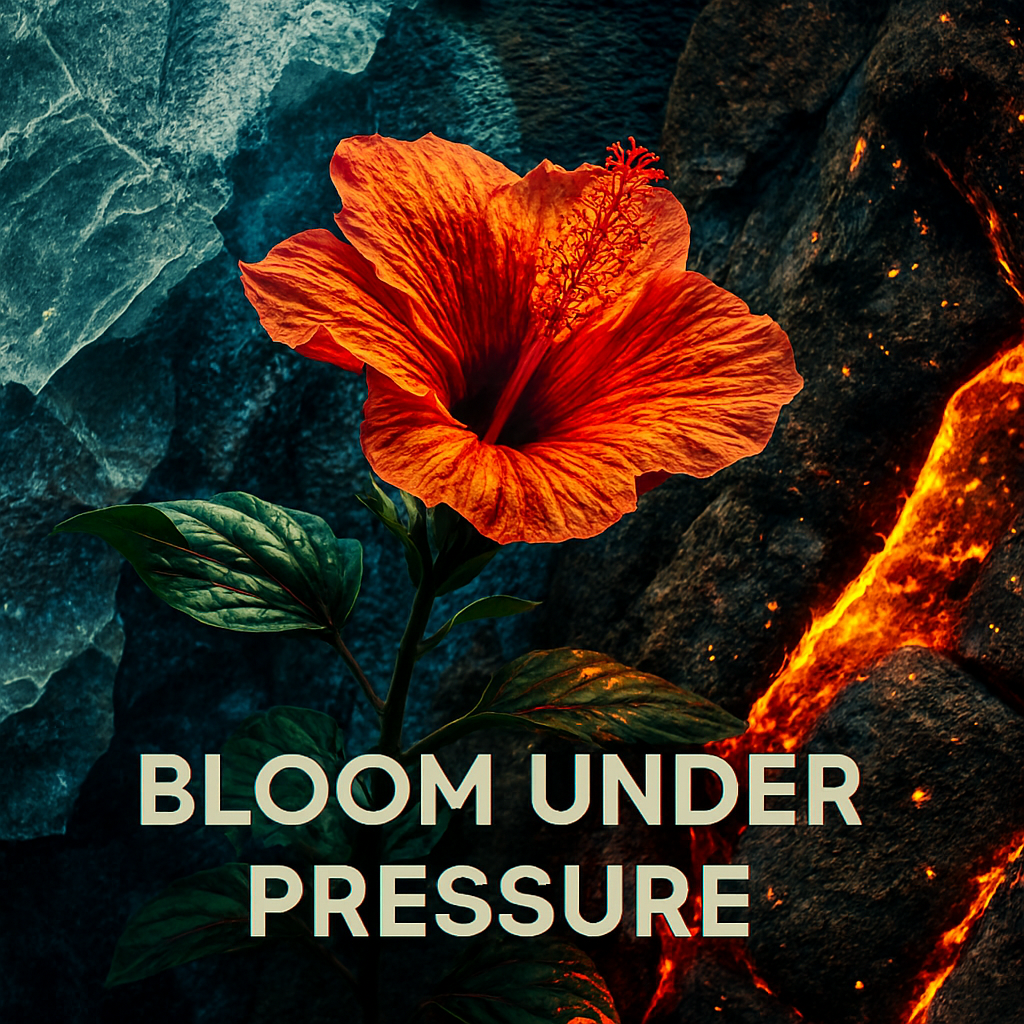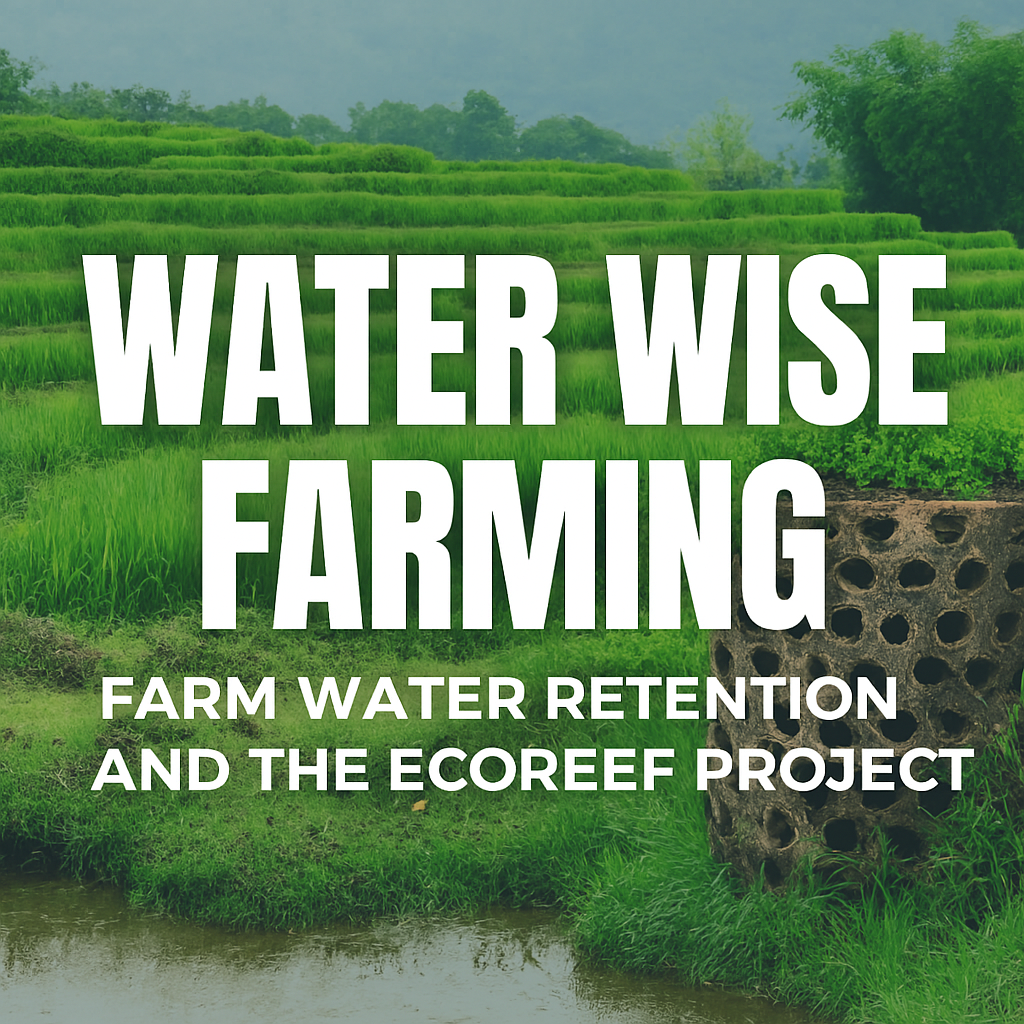EcoReef All Naturals – A Regenerative Blueprint for Land and Water
The Philosophy Behind EcoReef All Naturals By The EcoReef Project
EcoReef All Naturals are designed as living scaffolds for ecological restoration. They use only biodegradable, organic materials sourced from land and sea. These reef units mimic natural formations to encourage biodiversity and root establishment. By integrating into both aquatic and terrestrial environments, they support regeneration without disrupting native systems. The concept is rooted in biomimicry, drawing inspiration from coral reefs, mangroves, and beaver dams. Each unit is modular, allowing for scalable deployment across degraded zones. The goal is not to replace nature but to assist its recovery. EcoReefs act as temporary guardians while vegetation reclaims its territory. Their structure invites aquatic life to shelter, breed, and thrive. Over time, the reef dissolves, leaving behind a flourishing ecosystem.
Materials Used in EcoReef Construction
EcoReef units are built using natural fibers, branches, stones, and biodegradable binders. No synthetic plastics or chemical adhesives are used in the All Natural series. Common materials include hessian, sisal, coconut coir, and untreated wood. These elements are chosen for their low environmental impact and high compatibility with soil and water systems. Stones and rubble provide weight and anchoring, while branches form protective cavities. Moss and root balls help retain moisture and support plant growth. The binders used are plant-based and dissolve harmlessly over time. Each material is selected for its ability to decompose without leaving toxins. The design encourages microbial activity and soil enrichment. EcoReefs become part of the landscape rather than foreign objects.
How EcoReefs Support Aquatic Life
EcoReefs offer safe havens for fish, crustaceans, and amphibians. Their porous structure allows water to flow while providing shelter from predators. Cavities and crevices mimic natural reef environments, encouraging spawning and nesting. Algae and mosses colonize the surfaces, creating food sources for smaller species. Over time, these microhabitats attract larger aquatic life. The reefs stabilize sediment and reduce erosion in shallow waters. They also buffer wave energy, protecting shorelines and estuaries. By enhancing biodiversity, EcoReefs contribute to healthier aquatic ecosystems. Their presence can reverse the decline of native species. They are especially effective in areas impacted by dredging, pollution, or overfishing.
Root Systems and Vegetation Recovery
EcoReefs are designed to anchor root systems and support plant regeneration. Their structure traps moisture and nutrients, creating ideal conditions for germination. Native grasses, reeds, and shrubs quickly colonize the reef surfaces. As roots penetrate the biodegradable matrix, they stabilize the soil and prevent runoff. The reefs act as nurse beds for young plants, shielding them from wind and water stress. Over time, the vegetation overtakes the reef, rendering it invisible. This process restores natural cycles without artificial intervention. EcoReefs are particularly effective in riparian zones and degraded wetlands. They support both terrestrial and aquatic plant species. The result is a self-sustaining, biodiverse landscape.
Deployment Strategies for Land and Water
EcoReefs can be deployed in rivers, lakes, estuaries, and degraded farmland. Their modular design allows for flexible placement depending on terrain and water flow. In aquatic settings, they are anchored using natural weights and submerged partially. On land, they are embedded into soil with minimal excavation. Deployment teams assess local conditions to determine optimal reef configurations. The reefs can be arranged in linear, radial, or clustered patterns. Each layout serves a different ecological purpose, from erosion control to habitat creation. Installation requires no heavy machinery and minimal labor. Community groups and conservation teams often participate in deployment. The process is designed to be inclusive, low-impact, and scalable.

Lifecycle and Biodegradation Timeline
EcoReefs are engineered to degrade gradually over 12 to 36 months. The timeline depends on climate, water salinity, and microbial activity. As the reef breaks down, it releases nutrients into the surrounding soil and water. This decomposition supports fungi, bacteria, and invertebrates. The materials used are tested for non-toxicity and ecological compatibility. No residue or synthetic fragments remain after full degradation. The reef’s disappearance coincides with the emergence of a stable ecosystem. Monitoring teams track changes in vegetation, water quality, and species diversity. The goal is to leave no trace while catalyzing long-term recovery. EcoReefs are a temporary intervention with permanent benefits.
Table – Biodegradable Materials and Their Functions
| Material | Function | Degradation Time | Ecological Benefit |
|---|---|---|---|
| Coconut Coir | Moisture retention | 12–18 months | Supports root growth |
| Hessian | Soil stabilization | 6–12 months | Prevents erosion |
| Untreated Wood | Structural support | 24–36 months | Shelter for aquatic life |
| Sisal Fibers | Binding and texture | 12–24 months | Enhances microbial activity |
Community Engagement and Education
EcoReef projects often involve schools, local councils, and environmental groups. Workshops teach participants how to build and deploy reef units. Educational signage explains the ecological purpose of each installation. Children learn about biodiversity, water cycles, and soil health through hands-on activities. Community ownership increases long-term stewardship and monitoring. Volunteers help track plant growth and wildlife return. Public art and storytelling are sometimes integrated into reef sites. These elements foster emotional connection and cultural relevance. EcoReefs become symbols of regeneration and resilience. The process transforms passive observers into active caretakers.
Table – Deployment Zones and Ecological Goals
| Zone Type | Deployment Method | Primary Goal | Target Species |
|---|---|---|---|
| Riverbanks | Embedded in soil | Erosion control | Frogs, reeds, grasses |
| Estuaries | Submerged and anchored | Biodiversity restoration | Crabs, mollusks, mangroves |
| Farmland edges | Linear placement | Soil regeneration | Worms, shrubs, fungi |
| Urban wetlands | Clustered arrangement | Habitat creation | Ducks, sedges, amphibians |
Monitoring and Adaptive Feedback
Post-deployment monitoring is essential to EcoReef success. Teams use visual surveys, soil sampling, and water testing. Drones and satellite imagery help track vegetation spread. Citizen scientists contribute data through mobile apps. Feedback loops allow for design adjustments in future deployments. If a reef dissolves too quickly, materials are modified for longevity. If colonization is slow, layout and placement are re-evaluated. Adaptive learning ensures each site evolves toward optimal health. Monitoring also builds trust with stakeholders and funders. Transparency and data sharing are core to the EcoReef ethos.
Table – Monitoring Metrics and Indicators
| Indicator | Measurement Method | Desired Outcome | Frequency |
|---|---|---|---|
| Plant Coverage | Drone imagery | 80% coverage in 12 months | Quarterly |
| Water Clarity | Turbidity sensor | <10 NTU | Monthly |
| Species Count | Visual survey | 15+ native species | Biannual |
| Soil Moisture | Probe readings | >25% retention | Monthly |
Symbolic and Editorial Resonance
EcoReefs are more than ecological tools—they are editorial symbols. Their presence tells a story of healing, resilience, and community. Each reef becomes a visual metaphor for regeneration. In editorial campaigns, they anchor narratives about climate action and local stewardship. The biodegradable nature of the reef mirrors the impermanence of intervention. It reminds us that nature, when supported, can reclaim its rhythm. EcoReefs offer a counter-narrative to industrial restoration. They embody humility, patience, and trust in natural systems. Their visual language is earthy, modular, and emotionally resonant. They invite reflection, participation, and hope.
Table – Editorial Themes and EcoReef Symbolism
| Editorial Theme | EcoReef Symbolism | Visual Motif | Emotional Tone |
|---|---|---|---|
| Regeneration | Dissolving scaffold | Roots, moss, water | Hopeful, grounded |
| Community Healing | Shared construction | Hands, tools, laughter | Inclusive, restorative |
| Climate Action | Low-impact intervention | Earth tones, textures | Urgent, optimistic |
| Cultural Memory | Storytelling through place | Local art, signage | Reflective, ancestral |
Applications in Urban and Rural Landscapes
EcoReefs adapt to both urban and rural contexts. In cities, they soften hardscapes and restore forgotten wetlands. On farms, they buffer runoff and rebuild soil fertility. In parks, they create microhabitats for birds and insects. Their modularity allows for integration into green infrastructure. Rooftop gardens, rainwater catchments, and bioswales can host reef units. In rural areas, they support rewilding and regenerative agriculture. Their presence reduces the need for synthetic fertilizers and erosion barriers. EcoReefs bridge the gap between ecological science and everyday landscapes. They make restoration visible, tactile, and participatory.
Future Innovations and Research
EcoReef teams are exploring fungal mycelium as a binding agent. Research into algae-infused fibers may enhance aquatic colonization. AI-driven mapping helps identify degraded zones for reef deployment. Sensor-embedded reef units could monitor temperature, salinity, and microbial activity. These innovations aim to deepen ecological feedback and accelerate adaptive learning. Collaborations with universities and indigenous knowledge holders are shaping new prototypes. Future reefs may include seed capsules for targeted vegetation recovery. Experiments with biochar integration show promise for carbon sequestration. The goal is to evolve EcoReefs into intelligent, responsive ecological tools. Innovation remains grounded in simplicity, biodegradability, and symbolic resonance.
Cultural Integration and Indigenous Knowledge
EcoReef design is enriched by indigenous ecological wisdom. In many cultures, land and water are seen as living kin. Traditional practices of bunding, weaving, and seasonal planting inform reef construction. Elders contribute insights on species cycles and sacred water flows. EcoReefs become part of cultural landscapes, not just ecological ones. Storytelling and ceremony often accompany reef deployment. This integration fosters respect, continuity, and emotional depth. Indigenous-led reef projects prioritize relational ethics over technical metrics. The reefs serve as bridges between ancestral knowledge and modern restoration. Cultural resonance amplifies ecological impact and community stewardship.
Table – Indigenous Practices and EcoReef Parallels
| Indigenous Practice | EcoReef Parallel | Shared Principle | Cultural Region |
|---|---|---|---|
| Seasonal Bunding | Modular reef placement | Water flow management | Australia, India |
| Weaving Plant Fibers | Biodegradable reef binding | Material harmony | Pacific Islands, Andes |
| Sacred Water Mapping | Site-specific deployment | Respect for flow | North America, Amazon |
| Storytelling Rituals | Community reef ceremonies | Emotional stewardship | Africa, Oceania |
Emotional and Psychological Impact
EcoReefs offer more than ecological benefits—they restore emotional landscapes. Witnessing nature recover fosters hope and resilience. Community members often report reduced stress and increased connection. Children who participate in reef building develop ecological empathy. The tactile, earthy nature of the reefs grounds participants in the present. EcoReefs become symbols of healing after trauma or environmental loss. Their presence invites reflection, gratitude, and renewal. Public installations often become gathering places for quiet contemplation. Emotional resonance is designed into every aspect of the reef. Restoration becomes not just technical, but deeply human.
Integration with Editorial Campaigns
EcoReefs are ideal anchors for editorial storytelling. Their visual texture and symbolic depth lend themselves to powerful narratives. Campaigns focused on climate, community, or healing can use reef imagery to evoke trust. Editorial modules might include before-and-after visuals, community quotes, and ecological data. The reef’s lifecycle mirrors editorial arcs—beginning, transformation, and resolution. EcoReefs can be featured in print, digital, and experiential formats. Their modularity supports adaptive storytelling across platforms. Editorial clarity is enhanced by the reef’s tangible presence. They offer a way to visualize abstract concepts like regeneration and resilience. EcoReefs make editorial campaigns emotionally intelligent and ecologically grounded.
Table – Editorial Formats and EcoReef Integration
| Format Type | EcoReef Integration | Symbolic Function | Audience Impact |
|---|---|---|---|
| Print Magazine | Feature spreads, infographics | Visual metaphor for healing | Deep engagement |
| Digital Campaign | Interactive maps, videos | Regeneration narrative | Broad reach |
| Public Installation | Signage, storytelling zones | Community anchoring | Emotional resonance |
| Educational Toolkit | Reef-building guides | Participatory learning | Youth empowerment |
Scaling Across Ecosystems
EcoReefs are designed to scale across diverse bioregions. From alpine wetlands to tropical estuaries, their materials adapt to local conditions. Regional customization ensures ecological compatibility and cultural relevance. Scaling is supported by modular design and open-source deployment guides. Partnerships with NGOs, councils, and schools accelerate adoption. Each new site becomes a node in a global restoration network. Data from deployments feed into shared learning platforms. Scaling is not just about quantity—it’s about symbolic depth. EcoReefs scale emotionally, culturally, and ecologically. Their presence transforms landscapes and communities alike.
Long-Term Vision and Stewardship
The long-term vision for EcoReefs is planetary healing through local action. Stewardship is built into every phase—from design to decomposition. Communities are trained to monitor, adapt, and replicate reef systems. The reefs become part of local lore and ecological memory. Over decades, they may help reverse biodiversity loss and soil degradation. The vision includes reef corridors across watersheds and coastlines. Stewardship is supported by storytelling, data, and ritual. EcoReefs are not a product—they are a practice. Their legacy is measured in roots, relationships, and resilience. The future is regenerative, inclusive, and symbolically rich.
EcoReefs as Living Editorial Infrastructure
EcoReefs are not just ecological interventions—they are editorial infrastructure. Their presence in landscapes creates narrative anchors for storytelling, education, and community engagement. Each reef becomes a living editorial module, evolving with the seasons and species it supports. Visual documentation of reef growth offers a timeline of regeneration. These modules can be embedded into school curricula, museum exhibits, and public art installations. Their tactile nature invites interaction, making abstract ecological concepts tangible. Editorial teams can use reef sites as case studies for climate literacy. The reefs also serve as metaphors for editorial ethics—transparent, biodegradable, and rooted in place. They embody clarity, resonance, and adaptive learning. EcoReefs transform restoration into a shared editorial journey.
Strategic Regeneration
EcoReefs represent a shift from extraction to regeneration. They invite us to participate in healing rather than dominating nature. Their biodegradable design reminds us that interventions should dissolve, not linger. Each reef is a gesture of trust—trust in nature’s ability to recover, and in communities to steward that recovery. They are symbols of humility, resilience, and reciprocity. In a world of synthetic solutions, EcoReefs offer a natural alternative. Their impact is measured not in permanence, but in transformation. They leave behind roots, stories, and relationships. EcoReefs are not the end—they are the beginning of a new ecological narrative. One that is inclusive, adaptive, and emotionally intelligent.













Leave a Reply